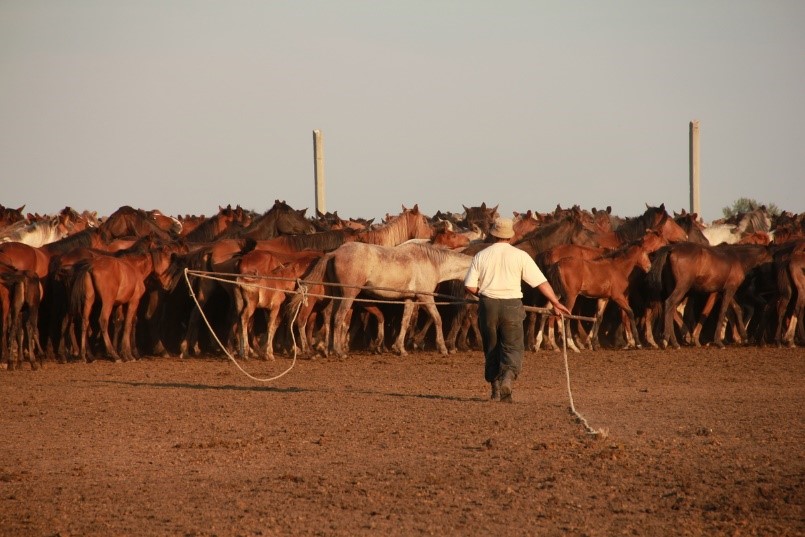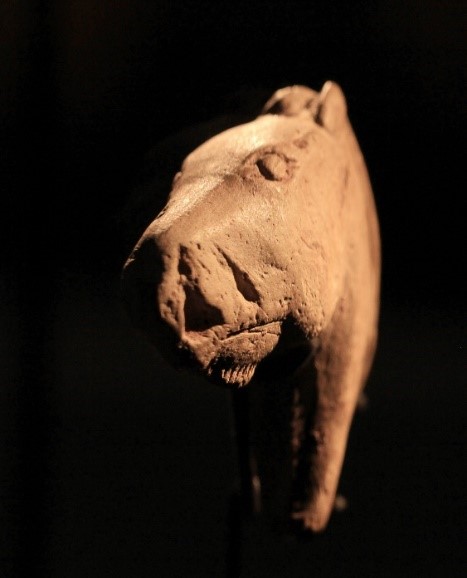- The modern horse was domesticated around 2200 BCE in the northern Caucasus.
- In the centuries that followed it spread throughout Asia and Europe.
- To achieve this result, an international team of 162 scientists collected, sequenced and compared 273 genomes from ancient horses scattered across Eurasia.
Horses were first domesticated in the Pontic-Caspian steppes, northern Caucasus, before conquering the rest of Eurasia within a few centuries. These are the results of a study led by paleogeneticist Ludovic Orlando, CNRS, who headed an international team including archaeologist, archaeozoologist and geneticist researchers of the Research Centre for the Humanities. Answering a decades-old enigma, the study is published in Nature on 20 October 2021.
By whom and where were modern horses first domesticated? When did they conquer the rest of the world? And how did they supplant the myriad of other types of horses that existed at that time? This long-standing archaeological mystery finally comes to an end thanks to a team of 162 scientists specialising in archaeology, palaeogenetics and linguistics.
A few years ago, Ludovic Orlando's team looked at the site of Botai, Central Asia, which had provided the oldest archaeological evidence of domestic horses. The DNA results, however, were not compliant: these 5500-year-old horses were not the ancestors of modern domestic horses1. Besides the steppes of Central Asia, all other presumed foci of domestication, such as Anatolia, Siberia and the Iberian Peninsula, had turned out to be false. “We knew that the time period between 4,000 to 6,000 years ago was critical but no smoking guns could ever be found” says CNRS research professor Orlando. The scientific team, therefore, decided to extend their study to the whole of Eurasia by analysing the genomes of 273 horses that lived between 50,000 and 200 years BCE. This information was sequenced at the Centre for Anthropobiology and Genomics of Toulouse (CNRS/Université Toulouse III - Paul Sabatier) and Genoscope2 (CNRS/CEA/Université d’Évry) before being compared with the genomes of modern domestic horses.
This strategy paid off: although Eurasia was once populated by genetically distinct horse populations, a dramatic change had occurred between 2000 and 2200 BC. “That was a chance: the horses living in Anatolia, Europe, Central Asia and Siberia used to be genetically quite distinct” notes Dr Pablo Librado, first author of the study. Then, a single genetic profile, previously confined to the Pontic steppes (North Caucasus)3, began to spread beyond its native region, replacing all wild horse populations from the Atlantic to Mongolia within a few centuries.“The genetic data also point to an explosive demography at the time, with no equivalent in the last 100,000 years” adds Pr Orlando. “This is when we took control over the animal's reproduction and began producing them in astronomical numbers.”
But how can this overwhelming popularity be explained? Interestingly, scientists found two striking differences between the genome of this horse and those of the populations it replaced: one is linked to a more docile behaviour and the second indicates a stronger backbone. The researchers suggest that these characteristics ensured the animals’ success at a time when horse travel was becoming “global”.
The study also reveals that the horses spread throughout Asia at the same time as spoke-wheeled chariots and Indo-Iranian languages. However, the migrations of Indo-European populations, from the steppes to Europe during the third millennium BC4 could not have been based on the horse, as its domestication and diffusion came later. This demonstrates the importance of incorporating the history of animals when studying human migrations and encounters between cultures.
During the ancient DNA research, a plethora of barriers emerged when investigating horse remains, such as the absence of DNA in bones. This issue is particularly prevalent in the case of Hungarian horse findings, where almost none of the samples yielded enough genetic material for nuclear genome analyses. The reason is likely due to treatment and thus exposition to environmental factors of the bones, as most of them were found in refusal and household pits. approximately thirty yielded enough DNA for comprehensive inspection: one from the site of Dunaújváros, associated with the Middle Bronze Age Vatya culture, and the other from Kaposújlak, associated with the Early Bronze Age Somogyvár-Vinkovci cultures. Both samples genetically blend to the prevailing European variation, similarly to e.g. Corded Ware culture associated horses, despite prominent archaeological and human-genetic steppe origins of these cultures. In the future more detailed research may be established by the expansion of dataset and advances in technology.
From the Hungarian side, archaeozoologist Erika Gál (IA RCH ELKH) played a valuable role in this study in cooperation with archaeologists Viktória Kiss and Gabriella Kulcsár (Momentum Mobility Research Group, IA RCH ELKH), Mária Bondár (IA RCH ELKH), Krisztina Somogyi and Zsolt Gallina (Rippl-Rónai Museum). Archaeogeneticists Anna Szécsényi-Nagy and Dániel Gerber made preliminary genetic studies on the Hungarian horse remains and then started the cooperation with Ludovic Orlando, later providing the samples for this astounding study.
The study was primarily funded by the European Research Council (Pegasus project) and France Génomique (Bucéphale project).
Notes
1 Read this press release: Unsaddling old theory on origin of horses, 22 February 2018.
2 Genoscope is a department of CEA-Jacob.
3 The Pontic steppe is the western part of the Eurasian steppe. The home of the modern domestic horse is thought to be in the Don and Volga basins, east of the Dnieper.
4 For example, see this press release: 7,000 years of demographic history in France, 25 May 2020.
 |
 |
|
|
Kazakh farmer catching horses in north-central Kazakhstan. © Ludovic ORLANDO / CAGT / CNRS Photothèque |
Magdalenian horse figurine from Duruthy, France. |
Other photos relating to the Pegasus project are available on the CNRS Images platform.
Bibliography
Contacts
CNRS Researcher | Ludovic Orlando |
CNRS Press Officer | Véronique Etienne | T +33 1 44 96 51 37 |
IAG RCH Researcher | Anna Szécsényi-Nagy



